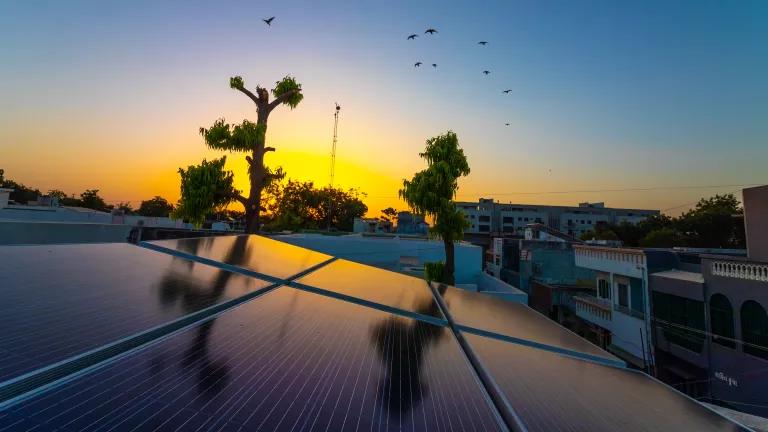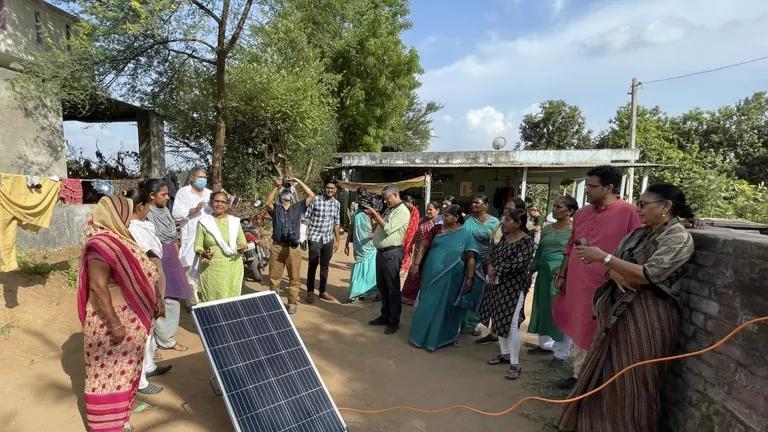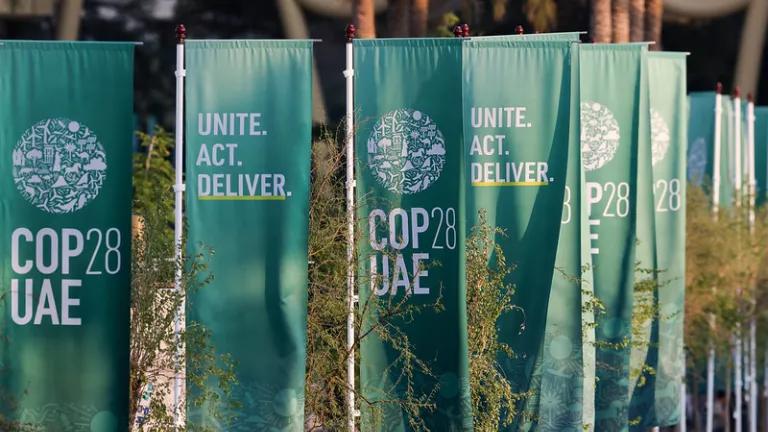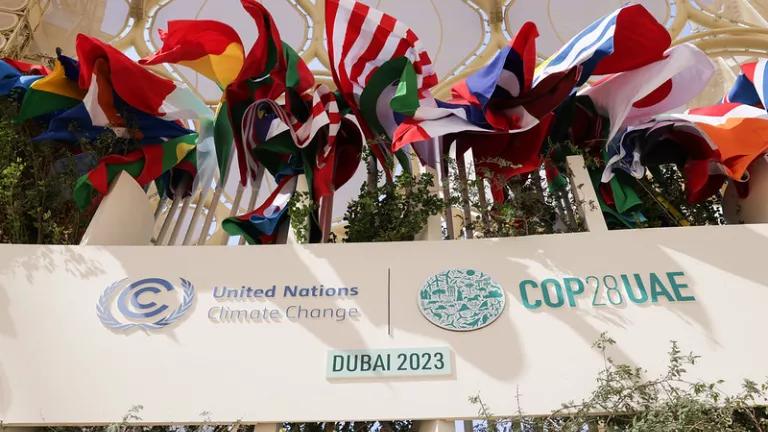India Green News: India to Reach 20 GW of Solar by FY18 End
India will ‘work above and beyond’ Paris climate deal to prevent global warming; India to reach 20 GW of installed solar capacity by FY18-end; WHO air-quality norms may help Indians live longer
India Green News is a selection of news highlights about environmental and energy issues in India.
September 14 – September 20, 2017
CLIMATE CHANGE
Sushma Swaraj says India will ‘work above and beyond’ Paris climate deal to prevent global warming
India on Wednesday reaffirmed its commitment to the landmark Paris climate agreement, and said it was willing to “work above and beyond” the pact to reduce greenhouse gas emissions, PTI reported.
During a leadership summit on environment pact at the United Nations, External Affairs Minister Sushma Swaraj said India had been at the forefront of the debate on environment and development. Swaraj, participating in the UN meet hosted by Secretary-General Antonio Guterres, said India was willing to work “above and beyond” the Paris agreement.
The summit was presided by French President Emmanuel Macron. External Affairs Ministry spokesperson Raveesh Kumar said, “India takes the climate change issue very seriously.” ….
(Scroll.in – September 20, 2017)
India Third Worst-Hit Country By Natural Disasters: UN Chief
India is the third worst affected country by natural disasters since 1995, UN Secretary-General Antonio Guterres on Tuesday said as he appealed the world leaders to implement the historic Paris deal with ever greater ambition.
Addressing the high-level debate at the General Assembly, Mr Guterres spoke out in favor of the Paris agreement on climate change, saying extreme weather events like Hurricane Irma are becoming "the new normal of a warming world."
"Climate change puts our hopes in jeopardy. Last year was the hottest ever. The past decade has been the hottest on record. Average global temperature keeps climbing, glaciers are receding and permafrost is declining. Millions of people and trillions of assets are at risk from rising seas and other climate disruptions," he said….
(NDTV – September 20, 2017)
30th Anniversary of Montreal protocol and 23rd World Ozone Day Celebrated
Highlighting the strength of the active collaboration between the government, industries and all stakeholders in the implementation of Ozone Depleting Substances (ODS) phase-out program in the country, Union Minister of Environment, Forest and Climate Change, Dr. Harsh Vardhan highlighted the importance of individual awareness and the strength of collective action. The Minister also laid special emphasis on the role played by children in ensuring the success of such campaigns.
Addressing a gathering at the celebrations of the 30th anniversary of the Montreal Protocol and 23rd World Ozone Day here today, with the theme - "Caring for all life under the Sun”, the Minister made a special mention of the pan-India awareness campaign launched by the Environment Ministry on the occasion. This campaign was among the most widespread engagements of the Ministry for awareness generation, carried out with the active partnership of States through schools and academic/research institutions spread across the country. The awareness campaign saw a participation of about 28 lakh students in more than 13, 000 schools and reached out to 214 districts across 16 states of the country. The Minister also spoke of the strong policy leadership given by India during the negotiations for the Kigali Amendment to the Montreal Protocol. Dr. Harsh Vardhan said that it is recognized that India played a crucial role in the adoption of the Kigali Amendment to the Montreal Protocol….
(Business Standard – September 17, 2017)
ENERGY
India to reach 20 GW of installed solar capacity by FY18-end: report
India is expected to reach 20 gigawatt (GW) of installed solar capacity by the end of the present financial year (2017-18), said a report released by the consulting firm Bridge to India (BTI) on Tuesday.
According to the latest edition of India Solar Map 2017, which was released on Tuesday, India will reach a total of 20 GW of installed solar capacity by 2017-18 end. It also said that India installed 7.5 GW in the last four quarters (Q4 2016-Q3 2017) and the total utility scale solar capacity reached 16.2GW by September.
Out of the 7.5 GW capacity added in this period, 57% came from three southern states—Telangana, Karnataka and Andhra Pradesh. With this, Telangana now ranks number one for commissioned capacity followed by Rajasthan and Andhra Pradesh….
(LiveMint – September 19, 2017)
India is about to embark on the most ambitious electric-car transformation in the world
India is shifting gears.
The world’s fifth-largest auto market is readying for a stupendous transformation: moving completely towards electric vehicles (EVs) by 2030.
This is part of the Narendra Modi government’s vision to helm a renewable-energy revolution in the country. It reckons that the automobile sector’s massive conversion will cut its oil bill by some $60 billion, reduce emissions by 37%, and curb the burgeoning demand for road infrastructure over the next 13 years….
(Quartz India – September 19, 2017)
How Off-Grid Renewable Energy Came To The Rescue In India's Flood Zones
Recently, deadly floods in India and South Asia and powerful storms in United States knocked out power to millions. But when people’s lives are thrown into chaos by devastating natural disaster, using alternative energy source may not seem like an obvious response. However, since energy grids are often the first to fail when a disaster hits, and outages hamper recovery efforts, energy entrepreneurs believe that off-grid renewable energy could provide an instant source of power to those who need it most.
“After a natural disaster hits, it can take weeks or longer for power to be restored and the expense of repairing transmission lines can be very high. Solar and battery mini-grids are a more resilient solution, as it allows local and remote communities to regain access to power, clean drinking water, medical facilities and communications immediately,” says William Brent, director of Power For All, a coalition of 200 public and private organizations campaigning to deliver universal energy access by 2030….
(Forbes – September 15, 2017)
ENVIRONMENTAL HEALTH AND AIR POLLUTION
WHO air-quality norms may help Indians live longer
According to a report by the Air Quality-Life Index (AQLI), India can improve the life quality and life expectancy of a majority of its population just by reducing the air pollution complying to the standard of World Health Organization (WHO). The report was released by the Energy Policy Institute at the University of Chicago.
It specifies how Indian could live about four years longer on average and even more in some cities if the WHO criterion is met….
(India Today– September 15, 2017)
When Rutam Vora was growing up in Vadodara, a city of about 2 million people near the western coast of India, his parents kept cool each summer by drenching bedsheets in water and hanging them in the windows of their house. When the scorching westerly wind known as the loo swept in and hit the sheets, the evaporating water absorbed the brunt of the heat. White chalk spread on the roof reflected the sun and dropped the temperature further. They were old methods of coping with the heat, like drinking lassis or chaas when “struck by the loo,” and they were effective.
But the weather, already hot, has been getting hotter. In the summer of 2015, it hit 114 degrees Fahrenheit in nearby Ahmedabad, where Vora works as a correspondent for The Hindu. The next summer, it passed 122 degrees, a record. It’s not uncommon for people to wrap their faces in wet cloth when venturing onto the furnace-like streets, and the wind is so hot it feels heavy. “For about a decade, the temperature has been going up,” Vora said. “But now, the last couple summers have been extreme, going beyond normal, bearable conditions.” ....
(The Verge – September 14, 2017)
Over 15% of species found in India are threatened
According to the latest IUCN update released this week over 15% of species found in India are threatened, which means they are either critically endangered, endangered or vulnerable.
With the update to the widely cited ‘Red List’ on Thursday the list now includes 87,967 species from across the world of which 25,062 are threatened with extinction. There are 6939 species from India that are part of the list of which 1055 face threats.
The Pakistan Whipray, whose range extends from eastern Pakistan to the west coast of India, which was included in the list for the first time along with 38 other species was found to be critically endangered….
(Hindustan Times – September 16, 2017)
Compiled by Laasya Bhagavatula
Note: The linked articles and excerpts in this post are provided for informational purposes only and do not necessarily reflect the views or positions of the India Initiative or of the Natural Resources Defense Council.




